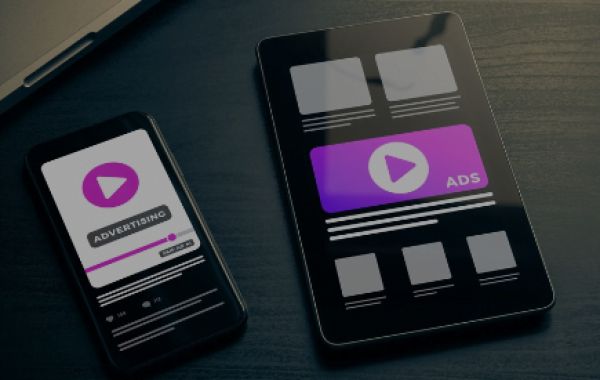It is always essential for brands to find new, effective, and unique tactics and techniques to capture the attention of the target audience. It’s no secret that users watch videos on different devices and prefer this format to others — 69% of users prefer video over other content formats when learning about a new product.
So it makes a scene for brands to implement videos in their marketing strategies.
Let’s learn more about why brands should implement video in their advertising strategy
Video provides brands prime opportunities for data collection, brand exposure, enhanced targeting, and personalization — capabilities that can have an incredible influence on business performance. But one of the main reasons why brands should use video in their ad campaign is that video allows advertisers to interact with the target audience in a format they prefer. More than 50% of internet users want to see videos from brands more than any other type of content.
However, this isn't the only reason. Here are some more:
- Drive engagement. When other ad formats rely on text messages, bright design, and clear call-to-action, video format has three things that catch users’ attention: movement, sound, and speed. And it plays a crucial role in converting efficient messages, hence leading to better engagement. Moreover, based on research the average user remembers 95% of a brand’s message when it is watched rather than read. So video ads that pique the interest of users and follow through with a persuasive final call-to-action are bound to have success in keeping the audience interested.
- Higher click-through rate. As video advertising has a better message delivery and storytelling effect than banner ads, it makes the ad format not only more engaging but it also gets more clicks. So according to the survey, the CTR of video ads in mobile apps is 7.5 times higher than for display ads.
- Positive effect on ROI. Video advertising is not only an engaging format used for increasing brand awareness, but is also a performance tool for driving conversions and brand revenues.87% of marketers reported that video advertising gives them a positive ROI.
- Increase purchase rate. Being the best explainer format, video helps users make a decision, 88% of internet users purchase a product or service after watching videos.
At a time when marketers try to improve ROI and deliver business results like sales and revenue, building the most effective ad campaigns has never been more important. So how can brands start an efficient video advertising strategy? With a programmatic video.
Programmatic video: what is it and how does it work?
Programmatic video is the automated process of buying video ad impressions in real-time with an automated platform. Programmatic platform uses audience data and Artificial Intelligence algorithms to show ads to the right user, at the right time, and at the right price.
Let’s imagine for a moment that the user wants to order a steak. They enter “steak delivery” into Google. They open sites, scroll through, return to Google homepage, and do it over and over again. They are starving and tired of searching. So they close the tab and order a well-known pizza. The next day they see ads for steak delivery everywhere: Facebook, google page, websites, etc. In the end, they will click a banner and order a steak.
This is how programmatic advertising works. AI analyzes a large amount of data to choose the most effective ads for users based on a variety of signals. In the end, the right message will be delivered to the right user at the right moment because it understands user interest, preference, and behavior.
Programmatic video formats: what choose better?
When it comes to programmatic video formats, these are common formats used:
- In-stream video. In this case, video ads will be promoted before, during, or after other videos on YouTube and across websites, video hosting, and so on.
- Out-stream video. This format is very similar to native ads. Brand’s video advertisement will be shown in the content of web pages while users browse the site.
- Video Discovery. This format advertises video content in places of discovery, including next to related YouTube videos, as a part of a YouTube search result, or on the YouTube mobile homepage.
When should brands use video advertising?
Sight, sound, and motion have always been the most engaging way to reach users. Historically businesses use video as a part of mid- and upper-sales funnel strategies. So video ads can help businesses:
- Increase brand awareness;
- attract users’ attention to new products and services;
- help increase consumer satisfaction;
- improve loyalty and increase trust;
- attract quality traffic to a site, etc
As the customer journey becomes increasingly digital and the lines blur between making purchases and other digital activities, tools for brand discovery and conversion are shrinking. Nowadays, video ads aren't only a tool for increasing brand awareness but also driving sales — 78% of marketers say that video has directly helped increase sales. So adding video ads to every sales funnel stage is more likely to influence consumers to make rapid purchase decisions.
How can brands improve video ad strategy?
- Be relevant. How can you make video ads noticeable? The answer is pretty simple — it’s about making ads relevant to both the user and the moment. Based on research, relevant video ads get 3 times more user attention than an average video ad. The programmatic video advertising platform will help your business deliver relevant messages at the right moment.
- Be mobile. There are 5.31 billion mobile users in the world. It is a large audience and a significant opportunity for brands. So that makes a scene for brands that interactions with mobile audiences are essential for them. Especially considering that 97% of users prefer to encounter ads on their smartphones. Programmatic mobile helps catch the mobile audiences’ attention.
- Be flexible. Customers have different online behaviors, and you should be able to reach them no matter where, when, or how they browse digital content. So brands can create a comprehensive media-mix strategy to communicate with target audiences in an efficient way. For example, they can combine video ads and display ads depending on a purchase journey — to use video ads on the upper-funnel stages, and banner ads or native ads as performance tools.
- Be valuable and engaging. Building stronger emotional engagement and providing value gives greater potential to further drive brand equity than promoting product superiority, which runs the risk of being disconnected from how people are thinking and feeling.
Conclusion
As you can see, brands can leverage video in multiple ways: for increasing awareness, building trust, driving sales, and so on. Adding video ads to the marketing strategy can help boost performance and help achieve goals.








